How to choose a heating radiator for a private house: try
The choice of heating radiators for a private house is a rather important task, especially if you come across it for the first time. It is very important to buy exactly those batteries that will be able to fully unleash the full potential of the designed heating system, and provide you with not only heat during the cold season, but also savings.
In the article we will tell you what you need to pay attention in the first place, and also analyze how popular models of heating batteries are suitable for such houses.
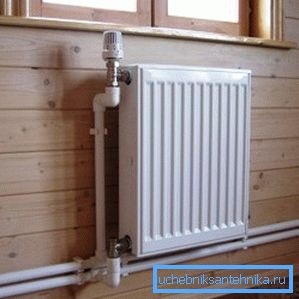
Features of private heating networks
In private homes in the absolute majority of cases an autonomous heating system is mounted. Naturally, this fact affects the choice of all elements of heating circuits (see also the article Types of heating radiators: how to buy an efficient and inexpensive battery).
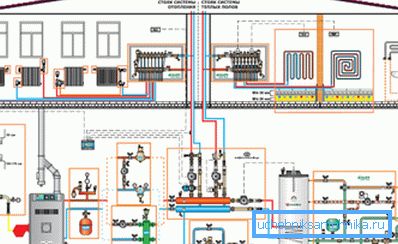
The main factors influencing the selection process will be:
- As a rule, the pressure in the pipes is maintained at a relatively low level. Due to this, the wear of parts is significantly reduced and the load on the joints is reduced.
- The risk of water hammer is completely eliminated, because pressure jumps simply have nowhere to take. Accordingly, there are no prerequisites for the destruction of the battery with a strong internal impact.
- For heating, a small amount of water is used, which is quite easy to clean to the desired state.
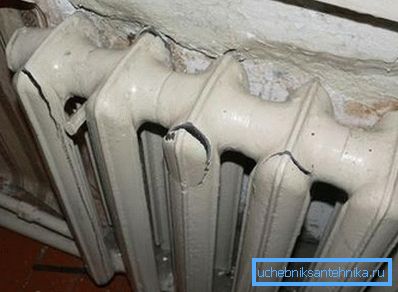
If we take into account all the above, then it becomes clear why the instruction recommends using not ultra-reliable cast-iron radiators in a private house, but more “delicate” aluminum and steel ones.
Which model is suitable?
Cast iron
Analysis of options for arranging heating systems of a private house will begin with common cast iron batteries:
- On the one hand, the use of heavy cast iron can be justified in capital low structures: the load on the supporting structures will still be incomparable with that experienced by high-rise buildings.
Note! This does not apply to country houses, built on frame technology. Here it is just better to pick the lightest parts, and mount them with your own hands, taking into account the distribution of loads.
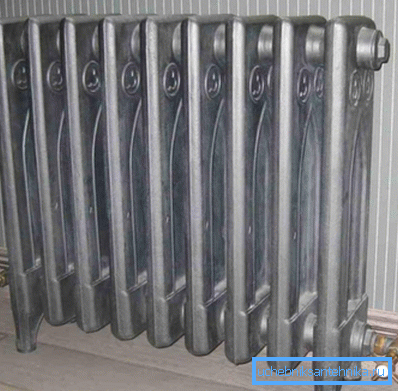
- On the other hand, cast iron has a significant disadvantage, which is insufficient heat transfer. And since we buy fuel for autonomous heating for our money, not everyone wants to heat thick cast-iron walls instead of indoor air.
- High inertia (slow heating and slow cooling) is also not a plus. This deficiency is especially pronounced when the heating is not constantly working. Not everyone likes a long warm-up time, so lately in the private construction, cast-iron radiators are used less and less.
Steel
As for steel panel-type batteries, experts consider them to be the most budget solution for a private house:
- The working pressure of the steel radiator is sufficient to avoid leakage or deformation when operating in a small network.
Note! But the pressure testing of batteries in an apartment building they can not withstand, and often this is exactly what happens.
- Heat output from such devices is also at a fairly high level, because the room will warm up quickly enough.
- Considerable dimensions of steel panels are excellent for wide window openings of a private house: the radiator blocks the cold flow, and therefore drafts almost never arise.
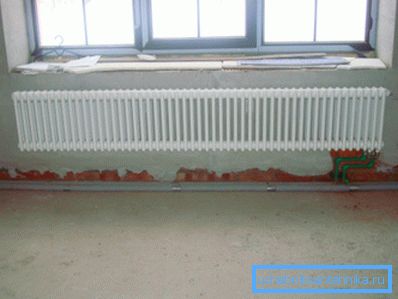
- Another advantage of this solution will be a reasonable price. This is really important, because in a private house you have to buy more batteries than in an apartment.
Aluminum and bimetallic
Aluminum products, as well as bimetallic radiators (copper / aluminum and steel / aluminum) are superior to steel in many ways.
They are characterized by very high heat transfer, which allows to significantly reduce the cost of acquiring energy.
- As for pressure, then according to this parameter, the “weak link” will be aluminum batteries.. On the other hand, even a minimum of 6 atmospheres (for the most cost-effective models) will be enough for trouble-free work in the heating network of a cottage or a private house.
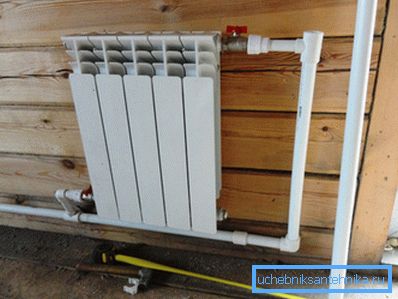
Note! Do not want to risk - buy a bimetallic radiator or an aluminum model with thickened walls of working chambers that can withstand from 16 to 20 atmospheres.
- High quality of water used in this case is a key factor: in our own home we can control all the parameters of the liquid we pour in ourselves. That is why, with due diligence, it is possible to protect aluminum radiators both from corrosion (occurs when working with an alkaline coolant) and from the formation of slags when using highly saline water.
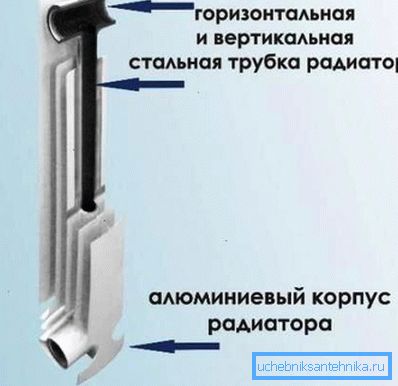
- As for bimetallic models, their purchase will probably be redundant.. The fact is that they are superior to aluminum, first of all, in strength and corrosion resistance, and in the conditions of a private household these advantages are practically negated. So it turns out that we will overpay about 40-50% for a meager increase in heat transfer.
Conclusion
Of course, to decide which radiators to choose for heating a private house, everyone should independently. And yet, experts usually opt for models made of steel or aluminum, refusing to cast iron pipes due to their lack of effectiveness.
However, if finances allow, then bimetallic batteries can be safely bought - it will not be worse from this for sure. The video posted on the page is worth viewing to get more information on this topic.